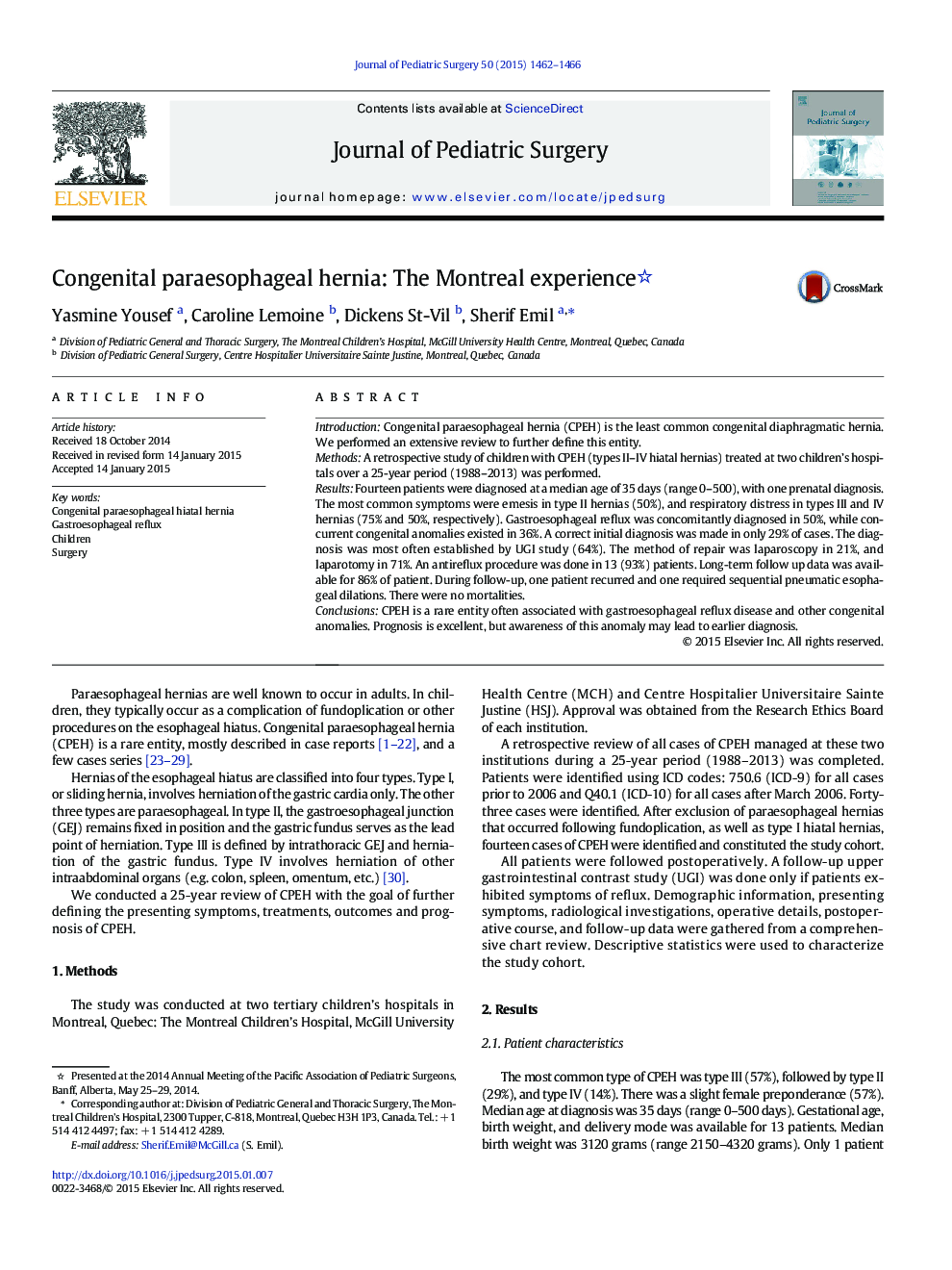| Article ID | Journal | Published Year | Pages | File Type |
|---|---|---|---|---|
| 4155247 | Journal of Pediatric Surgery | 2015 | 5 Pages |
IntroductionCongenital paraesophageal hernia (CPEH) is the least common congenital diaphragmatic hernia. We performed an extensive review to further define this entity.MethodsA retrospective study of children with CPEH (types II–IV hiatal hernias) treated at two children’s hospitals over a 25-year period (1988–2013) was performed.ResultsFourteen patients were diagnosed at a median age of 35 days (range 0–500), with one prenatal diagnosis. The most common symptoms were emesis in type II hernias (50%), and respiratory distress in types III and IV hernias (75% and 50%, respectively). Gastroesophageal reflux was concomitantly diagnosed in 50%, while concurrent congenital anomalies existed in 36%. A correct initial diagnosis was made in only 29% of cases. The diagnosis was most often established by UGI study (64%). The method of repair was laparoscopy in 21%, and laparotomy in 71%. An antireflux procedure was done in 13 (93%) patients. Long-term follow up data was available for 86% of patient. During follow-up, one patient recurred and one required sequential pneumatic esophageal dilations. There were no mortalities.ConclusionsCPEH is a rare entity often associated with gastroesophageal reflux disease and other congenital anomalies. Prognosis is excellent, but awareness of this anomaly may lead to earlier diagnosis.
